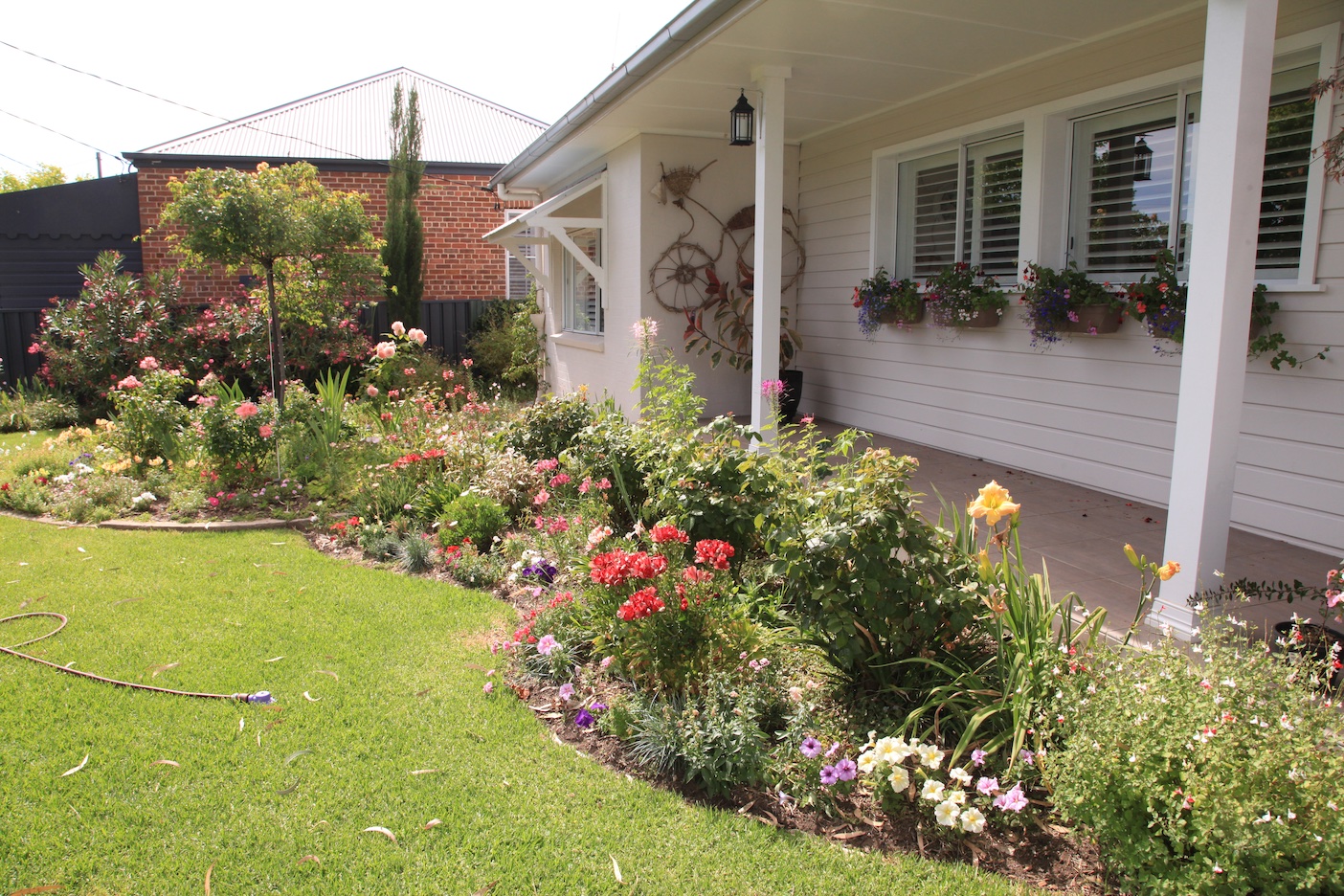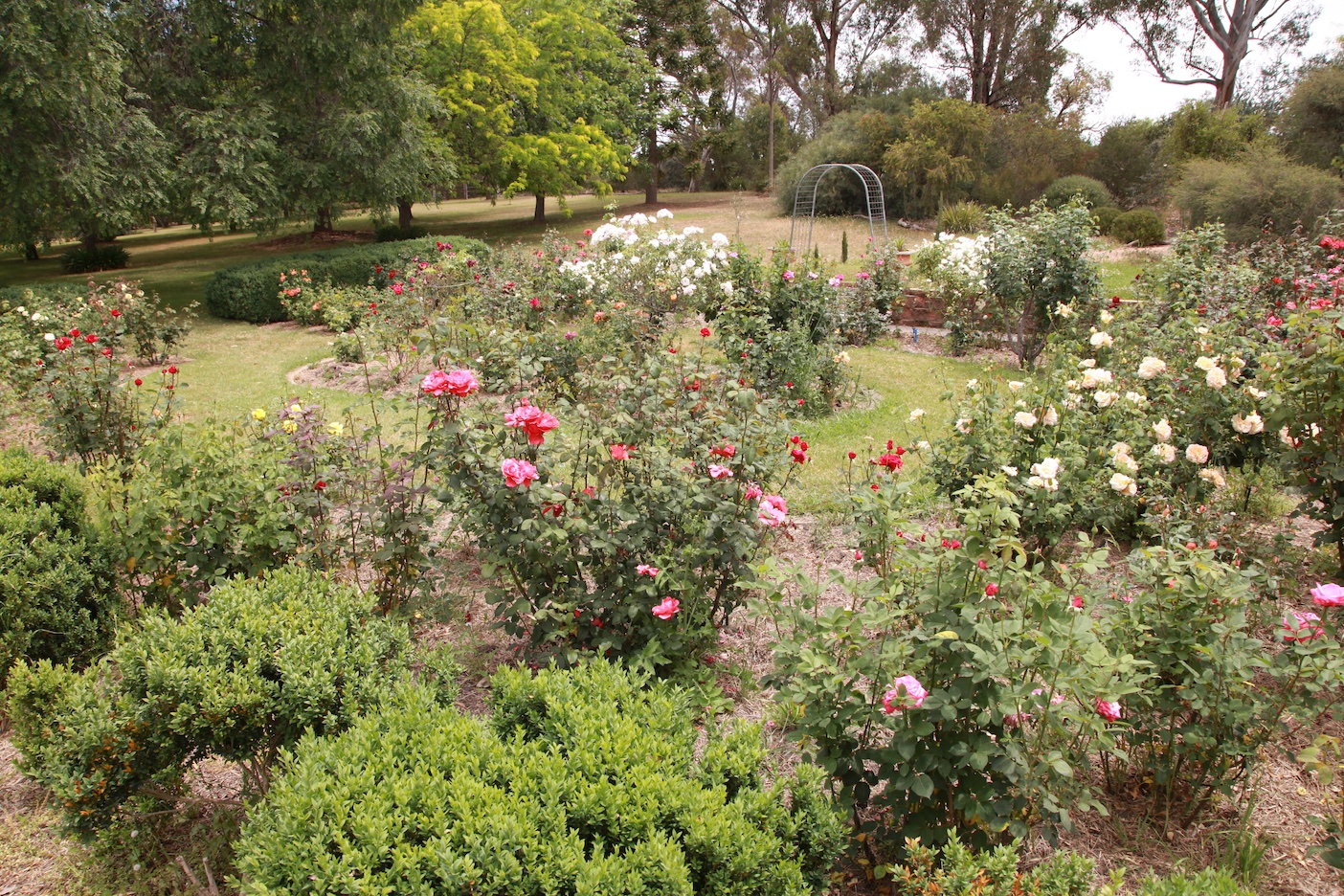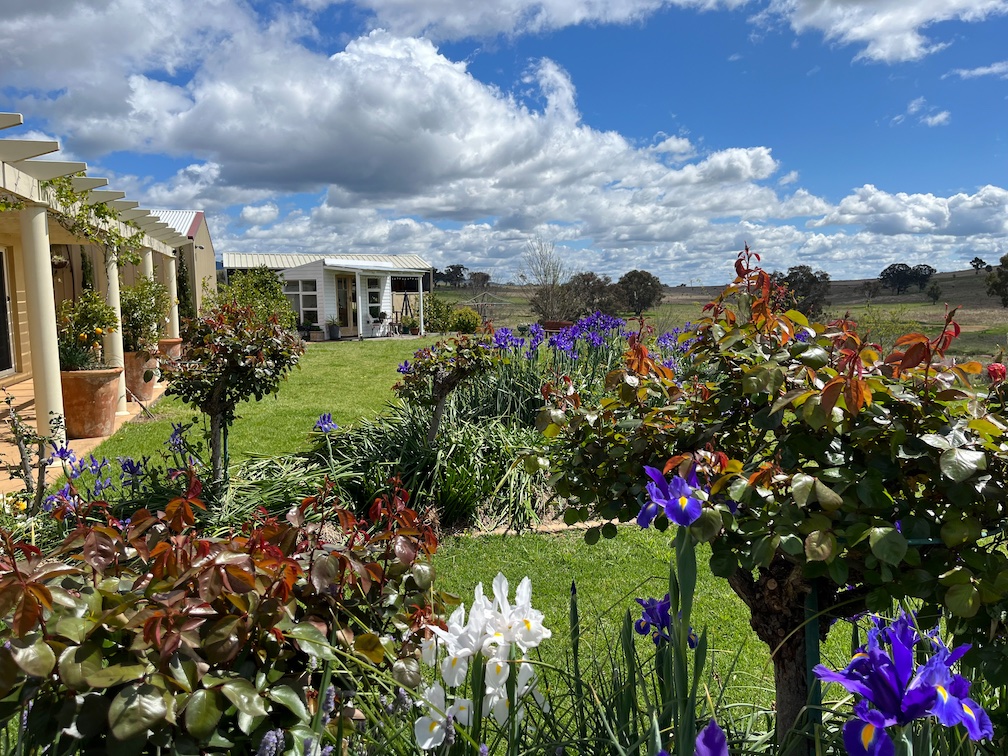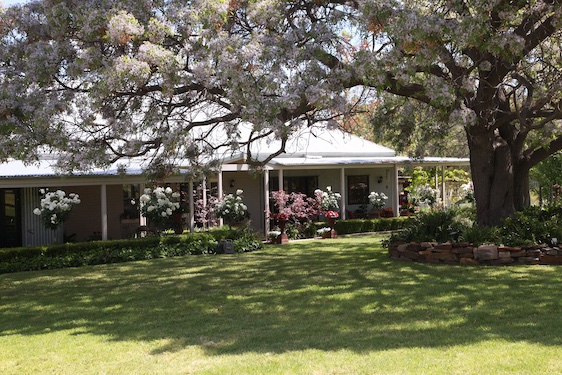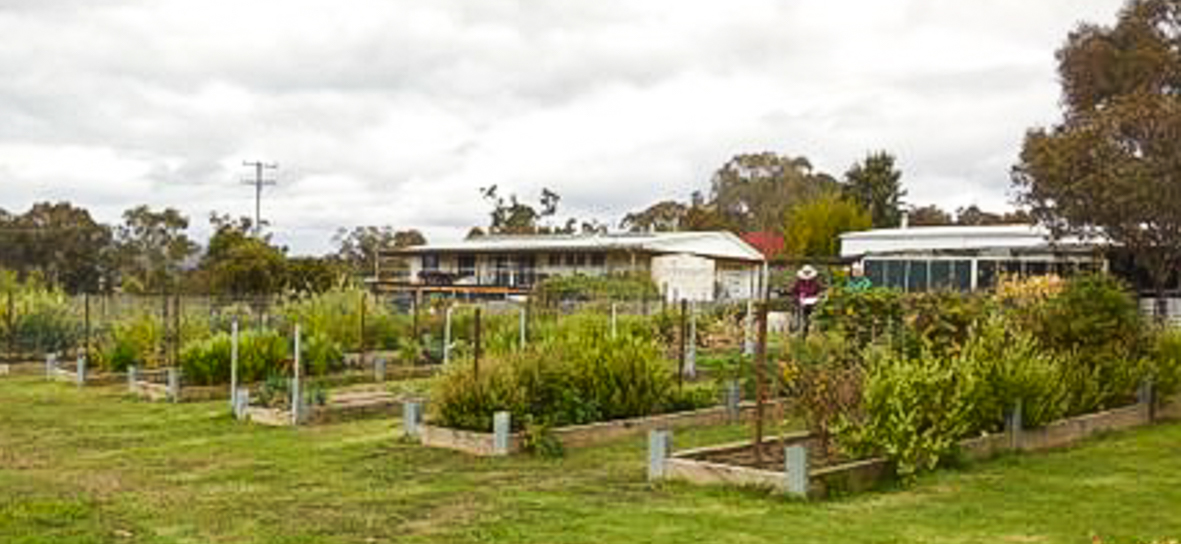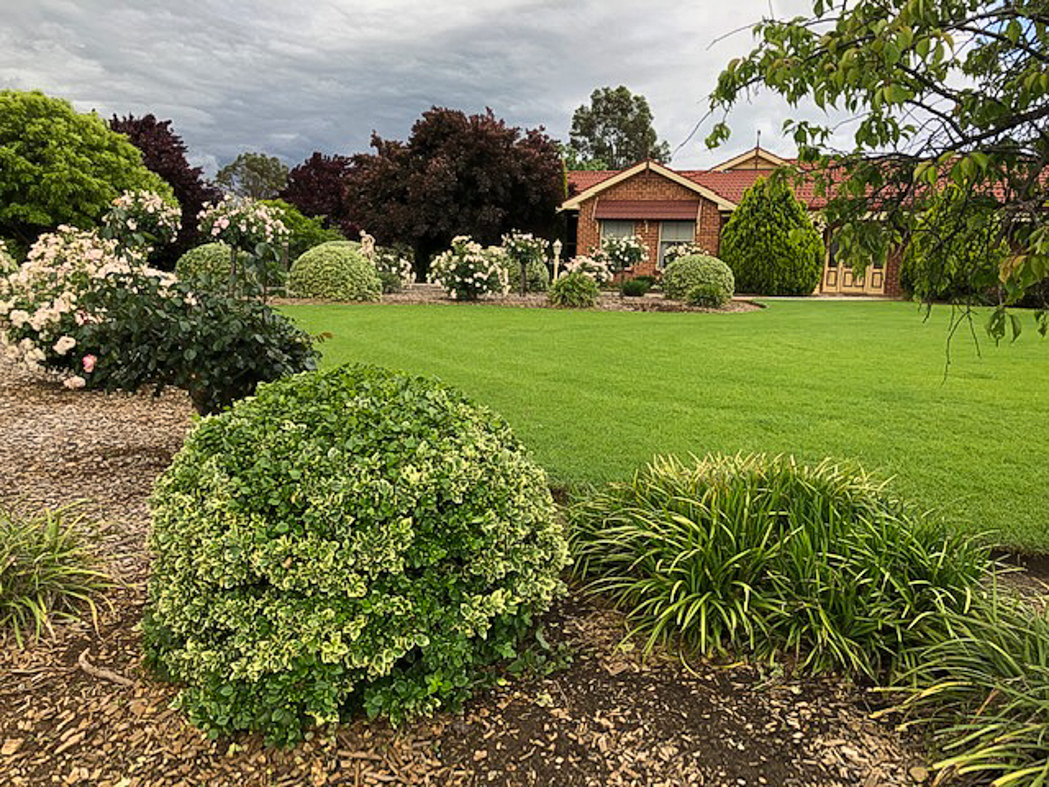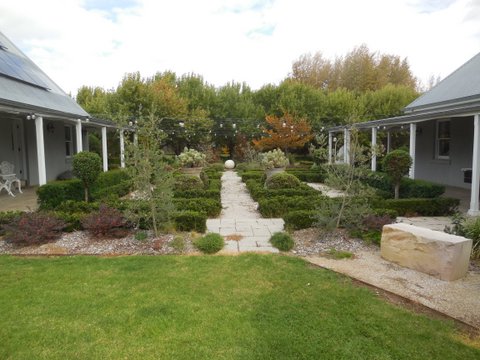Lynda Byrnes.
125 Market St, Mudgee.
Author: Jane Munro.
A garden of colourful floral delights.
In a very productive six years, Lynda has created an exceptionally pretty front garden, full of colourful perennials and roses, conifers, prunus and gorgeous window boxes and planters, on a site where there had been nothing except grass and weeds. The rich diversity continues on a larger scale in the garden at the rear of the house, with the addition of many ornamental trees, notably various maples and grandiflora magnolias, thriving in planters and in-ground.
Several Simonii poplars were planted to hide the colourbond fence at the rear of the block. However, as the trees grew very quickly, exposing the colourbond again, an interesting collection of mirrors was hung on the fence, effectively camouflaging it. These poplars are adorned in summer with the rambling stems and sublime pale pink blossoms of a Delbard rose. Nearby, several Rugosa roses are flourishing.
In a curved bed along eastern fence, despite receiving no sun in winter, and being scorched in summer, a multitude of trees and shrubs (including maples, fejoas and smoke bush) have created a microclimate which shelters dense underplantings of iris, petunias, dahlias. convolvulus, salvias, roses and more.
In the shelter of the western fence, you will find more salvias, rhapiolepis, and gorgeous pink hydrangeas- including an old-fashioned beauty with palest pink blossoms, and a more modern cultivar, whose blossoms are also pale pink, but with deep pink edges.
This garden must be a continuing delight year-round- I picture Lynda heading out each day- come rain, frost or summer heat- searching for something new coming into bud.
Unusually for Mudgee, Lynda has successfully grown two brugmansias (also known as jimsonweed, or devil’s trumpet)- a double white variety in the front garden and an apricot flowering variety on the western fence.
Two things to look out for in the front garden, are the quirky succulent-thatched letter box, and the huge river redgum which is over 200 years old. Lynda has gone to great lengths to keep this magnificent landmark tree viable, and it’s appreciated by many, including the wood ducks, which find very satisfactory nesting places in its huge canopy.

